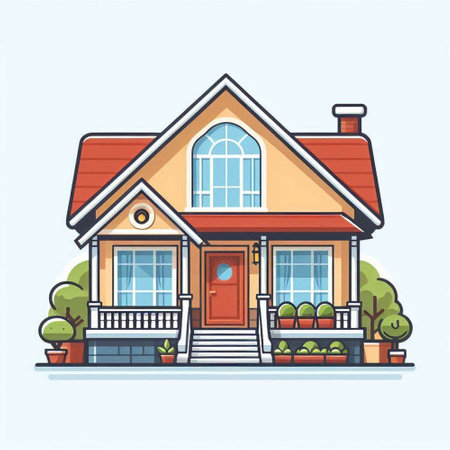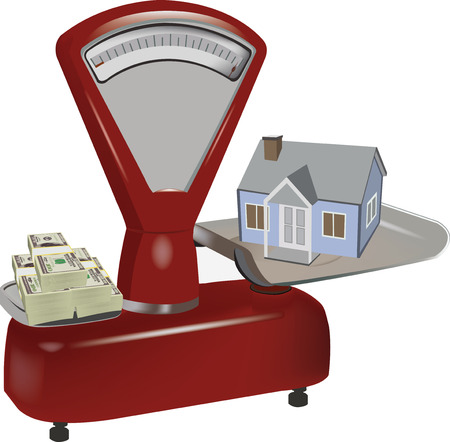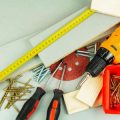1. What is Cabinet Refacing?
Cabinet refacing is a cost-effective way to give your kitchen or bathroom a fresh new look without the hassle and expense of a full cabinet replacement. Instead of tearing out your existing cabinets, refacing involves updating the exterior surfaces — like doors, drawer fronts, and hardware — while keeping the original cabinet boxes intact. This process can dramatically improve the appearance of your space while saving time and money.
How Does Cabinet Refacing Work?
The basic process of cabinet refacing includes:
- Removing old cabinet doors and drawer fronts
- Covering the cabinet boxes with a new veneer or laminate material
- Installing brand-new doors and drawer fronts
- Upgrading hardware such as handles, knobs, and hinges
This approach gives the cabinets a completely new face — hence the term “refacing” — while leaving the structure in place.
Cabinet Refacing vs. Cabinet Replacement vs. Resurfacing
It’s easy to confuse refacing with other renovation options. Here’s a quick comparison to help you understand the differences:
| Feature | Cabinet Refacing | Cabinet Replacement | Cabinet Resurfacing |
|---|---|---|---|
| Description | New doors & veneers over existing boxes | Complete removal and installation of new cabinets | Refreshing surfaces (e.g., sanding & painting) |
| Cost | $$ (Moderate) | $$$ (High) | $ (Low) |
| Time Required | 2–4 days | 1–3 weeks | 1–2 days |
| Main Benefit | A fresh look without full remodel costs | Total design flexibility & layout change | Quick cosmetic update |
Why Do Homeowners Choose Cabinet Refacing?
There are several reasons why homeowners across the U.S. opt for cabinet refacing:
- Saves Money: It typically costs about 30–50% less than full replacement.
- Saves Time: Most refacing projects are completed in just a few days.
- No Major Construction: Since youre not ripping out cabinets, theres less mess and disruption.
- Eco-Friendly: Reusing existing cabinet boxes reduces waste going into landfills.
If your current cabinet layout works well but the style feels outdated, refacing can be an ideal solution that blends beauty with practicality.
2. Pros and Cons of Cabinet Refacing
Cabinet refacing is a popular choice for homeowners looking to give their kitchen or bathroom a fresh look without the high cost of a full renovation. But like any home improvement project, it comes with its own set of benefits and drawbacks. Let’s take a closer look at the pros and cons of cabinet refacing so you can decide if its the right option for your home.
Benefits of Cabinet Refacing
Refacing cabinets can offer several advantages, especially when compared to completely replacing them. Here are some of the most common reasons homeowners choose this route:
Cost Savings
One of the biggest perks of cabinet refacing is how much money you can save. Since youre only replacing the doors, drawer fronts, and applying a veneer to existing cabinet boxes, youre avoiding the hefty price tag that comes with brand-new cabinetry and installation.
Less Disruption
Refacing typically takes just 2 to 5 days, compared to weeks for a full cabinet replacement. That means less mess and minimal interruption to your daily routine.
Eco-Friendly Option
If youre looking to go green, refacing is a more sustainable choice. It reduces waste by keeping your existing cabinet boxes out of landfills and requires fewer new materials.
Updated Look Without Major Construction
You still get a dramatic transformation in style and appearance—new doors, hardware, and finishes—without tearing out walls or redesigning your entire kitchen layout.
Drawbacks of Cabinet Refacing
While refacing offers many benefits, it’s not ideal for every situation. Here are some potential downsides to consider:
No Layout Changes
If you’re dreaming of changing your kitchen’s layout or adding new cabinets, refacing won’t help. Your current cabinet structure must stay as-is.
Not Suitable for Damaged Cabinets
If your cabinet boxes are warped, water-damaged, or structurally unsound, refacing won’t fix those issues. In these cases, full replacement might be necessary.
Limited Customization
While you can choose new styles and finishes for doors and hardware, your design options are still limited by the existing framework. You wont have the same freedom as starting from scratch.
Quick Comparison: Pros vs. Cons
| Pros | Cons |
|---|---|
| Saves money compared to full replacement | No changes to cabinet layout or structure |
| Faster project timeline (2-5 days) | Not ideal if cabinets are damaged or old |
| Environmentally friendly option | Limited customization options |
| Dramatic visual upgrade with less work | May not add as much value as full remodels |
Understanding both the pros and cons will help you make an informed decision about whether cabinet refacing is right for your space and budget.

3. Materials and Style Options
When it comes to cabinet refacing, one of the most exciting parts is choosing the materials and styles that will define your kitchen’s new look. From wood veneers to laminate finishes, there are plenty of options to match any design preference and budget.
Cabinet Refacing Materials
The material you choose for your cabinet refacing project not only affects how your cabinets look but also how they perform over time. Here are the most common materials used:
| Material | Description | Pros | Cons |
|---|---|---|---|
| Wood Veneer | A thin slice of real wood applied over cabinet surfaces. | Natural appearance, stainable, classic look | Can be pricier, may require more maintenance |
| Rigid Thermofoil (RTF) | A vinyl laminate heated and molded over MDF doors. | Affordable, easy to clean, available in many colors | Less heat-resistant, limited refinishing options |
| Plastic Laminate | A durable plastic surface bonded to plywood or MDF. | Highly durable, moisture-resistant, cost-effective | Not as authentic-looking as real wood |
Door Style Options
Your cabinet doors are front and center in your kitchen’s design. Choosing a door style that complements your home’s aesthetic is key. Here are a few popular choices:
- Shaker Style: Clean lines with a recessed center panel; versatile and timeless.
- Raised Panel: Traditional look with more detail and dimension.
- Slab (Flat-Panel): Modern and sleek with a smooth surface.
- Beadboard: Cottage-style design featuring vertical grooves for texture.
Choosing the Right Combination
The best combinations pair your preferred cabinet material with a door style that fits your kitchen’s overall theme. For example, if youre aiming for a cozy farmhouse feel, beadboard doors with wood veneer might be ideal. If youre leaning toward modern minimalism, go for slab doors with high-gloss laminate.
Pro Tip:
Don’t forget hardware! New handles or knobs can dramatically change the look of your refaced cabinets without much added cost.
Selecting the right materials and styles ensures that your cabinet refacing project not only looks amazing but also suits your lifestyle and stands the test of time.
4. Cost Breakdown and Budgeting Tips
If youre thinking about refacing your kitchen cabinets, understanding the cost involved is a crucial part of the planning process. Cabinet refacing is generally more affordable than a full cabinet replacement, but prices can still vary widely depending on several factors. Let’s break it down so you can make smart budgeting decisions for your home improvement project.
Typical Price Ranges
The cost of cabinet refacing in the U.S. typically ranges from $4,000 to $10,000 for a standard 10×10 kitchen. This estimate includes new veneer or laminate coverings, updated doors and drawer fronts, hardware replacements, and professional labor.
| Project Size | Estimated Cost |
|---|---|
| Small Kitchen (Less than 100 sq ft) | $1,500 – $4,000 |
| Average Kitchen (100-200 sq ft) | $4,000 – $8,000 |
| Large Kitchen (200+ sq ft) | $8,000 – $12,000+ |
Main Factors That Affect Cost
- Material Choice: Wood veneers like cherry or walnut cost more than laminate or thermofoil options.
- Door Style: Shaker or raised-panel doors are more expensive than flat-panel styles.
- Hardware Upgrades: Adding soft-close hinges or designer handles can increase the overall cost.
- Labor Rates: Costs vary depending on your location and the contractor’s experience level.
Smart Budgeting Tips
Create a Realistic Budget
Start by determining how much you’re willing to spend and stick to that limit. Include an extra 10-15% for unexpected expenses.
Select Materials That Balance Quality and Cost
Laminates are budget-friendly and come in a variety of finishes. If you want the look of wood without the higher price tag, consider RTF (rigid thermofoil) doors as an alternative.
Avoid Scope Creep
If youre just refacing cabinets, avoid adding unrelated upgrades like new countertops or flooring unless youve planned for them in advance.
Get Multiple Quotes
You’ll get a better sense of fair pricing by comparing at least three quotes from licensed professionals in your area.
BONUS TIP: DIY vs. Professional Installation
If youre handy with tools and have some experience, doing it yourself can save thousands. However, keep in mind that mistakes can be costly. For most homeowners, hiring a pro ensures quality results with less hassle.
5. DIY vs. Hiring a Professional
When it comes to cabinet refacing, one of the biggest decisions youll face is whether to take on the project yourself or bring in a licensed contractor. Both options have their own set of pros and cons, and the right choice often depends on your skill level, budget, and timeline.
DIY Cabinet Refacing
Doing it yourself can be a rewarding experience if youre handy with tools and enjoy home improvement projects. It’s also typically more budget-friendly since you’re saving on labor costs. However, cabinet refacing requires precision and attention to detail—something that might be challenging for beginners.
Pros of DIY
- Cost savings on labor
- Full control over materials and design
- Satisfaction of completing a project yourself
Cons of DIY
- Time-consuming process
- Lack of professional-grade tools
- Risk of costly mistakes if done incorrectly
Hiring a Professional Contractor
If you value time, quality workmanship, and peace of mind, hiring a licensed contractor might be your best bet. Professionals bring experience, specialized tools, and access to higher-quality materials. They can often complete the job faster and with better results.
Pros of Hiring a Pro
- Expert craftsmanship and precision
- Saves time and reduces stress
- Access to warranties and professional-grade materials
Cons of Hiring a Pro
- Higher upfront cost due to labor fees
- You’ll have less control over the process
Quick Comparison Table
| DIY Refacing | Hiring a Pro | |
|---|---|---|
| Cost | $500–$1,500 (materials only) | $1,500–$5,000+ |
| Time Required | A few weekends | A few days |
| Skill Level Needed | Moderate to high | No skills needed (for homeowner) |
| Error Risk | High for beginners | Low with experienced contractor |
What to Look for When Hiring a Contractor
If you decide to go pro, make sure you hire someone reliable. Here are some key things to check:
– License & Insurance:
Your contractor should be licensed in your state and carry liability insurance.
– Experience:
A seasoned pro will have photos of past work and references you can contact.
– Written Estimate:
A detailed quote helps avoid hidden costs later on.
– Contract:
This should outline the scope of work, timeline, payment schedule, and warranty details.
No matter which route you choose—DIY or hiring a professional—it’s important to weigh your options carefully based on what fits your needs best.
6. FAQs and Maintenance Tips
When it comes to cabinet refacing, homeowners often have a lot of questions. Weve gathered the most common ones and provided easy-to-follow answers. Plus, we’ll share some simple maintenance tips to help your newly refaced cabinets stay in great shape for years to come.
Frequently Asked Questions
How long does cabinet refacing take?
Most cabinet refacing projects can be completed in 3 to 5 days, depending on the size of your kitchen and the complexity of the job.
Is cabinet refacing cheaper than replacing cabinets?
Yes, cabinet refacing typically costs 30% to 50% less than a full cabinet replacement. It’s a cost-effective way to update your kitchen without a full remodel.
Can I reface cabinets myself?
If you’re handy and have experience with home improvement projects, DIY refacing is possible. However, for best results and durability, many homeowners choose to hire professionals.
Will my kitchen be usable during the refacing process?
In most cases, yes. Since your existing cabinet frames stay in place, you can usually continue using your kitchen while the work is being done.
Does cabinet refacing add value to my home?
Absolutely. A well-executed cabinet refacing job can improve your kitchen’s appearance and functionality, which can boost your homes resale value.
Maintenance Tips to Keep Cabinets Looking New
Proper care is key to keeping your refaced cabinets looking fresh and beautiful. Here are some maintenance tips:
| Tip | Description |
|---|---|
| Clean Regularly | Wipe down surfaces with a soft cloth and mild soap. Avoid abrasive cleaners that can damage the finish. |
| Avoid Excess Moisture | Keep cabinet surfaces dry. Use exhaust fans when cooking or running the dishwasher to reduce humidity. |
| Treat Spills Immediately | Spills should be wiped up right away to prevent staining or warping. |
| Check Hardware | Tighten loose hinges or knobs as needed. This helps maintain functionality and prevents wear on doors. |
| Use Cabinet Liners | Liners help protect interior surfaces from scratches and spills inside drawers and shelves. |
When to Call a Pro for Repairs
If you notice peeling veneer, warped doors, or damaged hardware that cant be fixed easily, it might be time to consult a professional. Addressing small issues early can prevent bigger problems later on.


